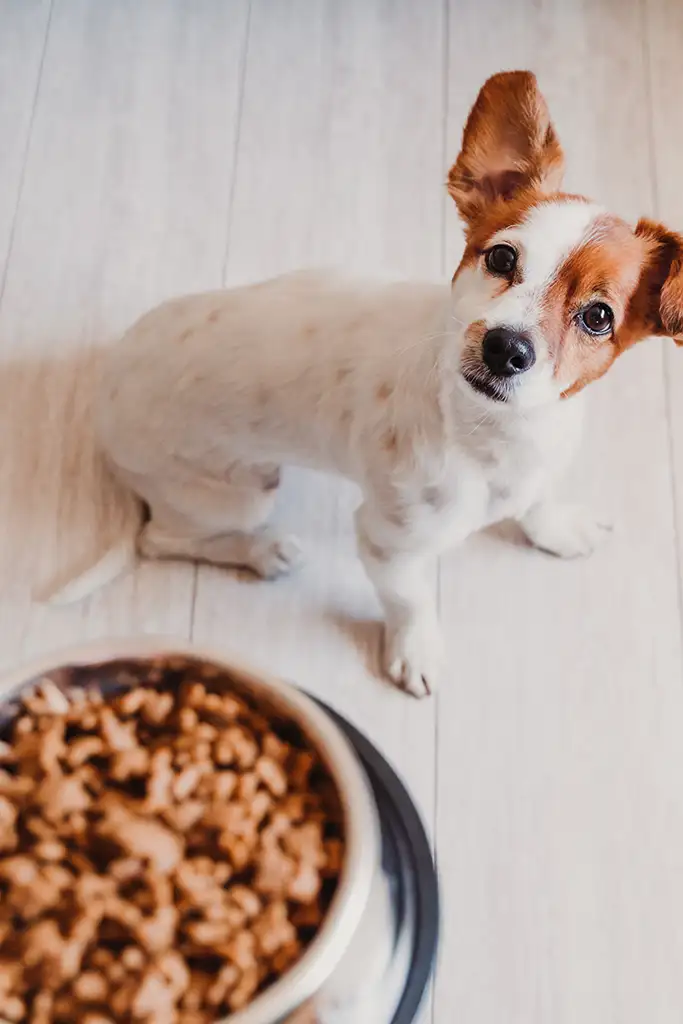Rottweiler Husky Mix | All About The Rottsky Hybrid Dog Breed
Quick Guide
Husky Rottweiler Mix | Breed Overview
Ever wondered what happens when a Rottweiler makes love to a Husky?
A popular hybrid dog these days is the Rottsky, a mix of Siberian Husky and Rottweiler parents. Many of these furry friends have striking good looks and winning personalities.
So what’s the real story?
As with all hybrid dogs, you can expect variations in the offspring. Getting to know the Rottsky starts with a firm understanding of the parent breeds and looking for variations among their dominant traits.
We will start by first looking at the Rottsky – a new hybrid dog with a lot still to learn about. Then we take a look at one half of the hybrid, the Siberian Husky – prized for thousands of years as a sled dog and family companion. Then we will investigate the other half of the hybrid, the Rottweiler – known for their fierce loyalty, confident and stable disposition, and superior guarding instincts.
THE ROTTSKY | Rottweiler Husky Mix
The Rottweiler Husky Mix is often known as a Rottsky. As with all hybrids, characteristics in the offspring of two established breeds can be hard to predict. Each puppy will receive different genetic contributions from their parents.
However, because we know a great deal about each of the parent breeds, and there have been enough Rottskies observed, we can draw some general conclusions about this hybrid. Let’s take a closer look:
Temperament
Both of the parent breeds are highly intelligent and there is no reason to expect you are going to end up with a dumb Rottsky. This means you will need to plan for training to keep the mind of your canine pal engaged. However, they will likely take well to any efforts to train them, particularly if kept positive and consistent.
That’s not all…
Prey drive is another common characteristic of both parents. If you have cats or other small animals in your household, or live in a neighborhood where cats roam free, this is definitely something to keep in mind. With the Husky’s penchant for escape, and the Rottweilers potential for inflicting damage, it is important that enclosures like yard fences are solid.
There is a possibility that you can have a puppy that is extraordinarily stubborn and difficult to work with. Make sure to screen the one you pick for a winning temperament. Seek a furry friend that seems very interested in people, actively seeks to engage with you, and avoid those that seem aloof or shy.
Be wary of rescuing an adult Rottsky, particularly if you suspect neglect, abuse, or poor handling. These are powerful pups that require experience to begin with, and addressing already known behavioral issues is best left to experts.
Rottsky Dog Size
Expect a puppy that will grow to somewhere in the middle of the two normal ranges between Rottweilers and Huskies. Adults will typically range between 55-110 pounds, and have a height consistent with medium sized dogs, 20-25 inches at the withers.
Coat and Appearance
Rottweilers have a very stable color: black and tan. However, Huskies have a wide variation of color combinations. This results in a very divers overall appearance.
The best part?
One of the most striking features of Rottsky pups tends to be their eyes, particularly if they inherent the Husky blue or blue and brown eye coloration. This combination is particularly striking when found on a darker coated Rottsky, and is one of the more prized appearance variations.
The larger, more dense head shape is a common feature of these hybrids. They tend to keep the dominant gene for slightly drooped triangular ears, although perky ears happen as well.
They tend to have a coat that is a mix of both in texture and appearance. It is likely you will have to plan for the biannual major undercoat shed typical with Huskies.
Health and Life Expectancy
As a general rule, larger and heavier dogs tend towards shorter lifespans than smaller and more lightweight dogs. Applying this knowledge to the age range of the parent breeds suggests that 9-13 years is a likely range, with those individuals closer to the Husky in stature to be on the longer end of that range.
Hip Dysplasia and eye problems are common to both breeds. The best way to mitigate risks is to insist on the medical records of the parents.
General Pro’s & Cons
PROS
- The Rottsky comes from two highly intelligent and eager to please breeds. Expect a furry friend that is easy to train if you are willing to put the time in.
- Both parent breeds are considered good choices as family dogs, although they need to be supervised around small children.
- The striking features of most Rottskies make them very attractive animals, with captivating good looks.
CONS
- Expect to invest in time to train and socialize your puppy to other people and canines, exposing them to as many new environments as possible. Otherwise, you may easily end up with a powerful and dangerous dog.
- Not very suitable for apartment living. Room to run and play is essential. A walk a few times a day is simply not going to cut it.
- The jury is still out on if this hybrid has less health problems than the parent breeds. However, Hip Dysplasia and persistent eye problems can be costly and disabling conditions.
For more Rottweiler & Husky Mixes check out these articles:
- Border Collie & Husky Mix
- Rottweiler & Pitbull Mix
HUSKY | The Rottsky Parent Breed Profile
History
This ancient breed began its journey over 4,000 ago as working companions for the Chukchi people in Siberia. It is thought that they were originally bred to assist hunting reindeer. As the climate became colder in Northeast Asia, the Chukchi people migrated with the reindeer to chase fertile lands. These canines were then also used to help move the camps on snow sleds.
These dogs were raised by the women of the tribes and hence spent a great deal of time around small children, likely the reason why the breed is still known today for their excellent temperament as a family pet.
The Chukchi also valued cooperative packmates, sometimes adding up to 20 Huskies to a sled. Unlike the other sledding breeds, Huskies tend to get along very well with other members of the pack, and tend towards low aggression with other dogs.
The Husky came to Alaska in the early 1900’s as long-distance sled racing dogs, as well as for delivering mail in the rough and cold climate of Alaska.
They famously were used to transport life-saving antitoxin from Anchorage to Nome to treat a diphtheria epidemic in 1925 when planes were unable to traverse the blizzard conditions. The famous statue of Balto in Central park commemorates the lead dog of this famous team.
Temperament
The Husky breed is well known for a playful and joyful personality. Both intelligent and eager to please, this is also a canine breed prized for trainability. Although, unless it is fun and engaging, don’t expect this fella to stay interested.
Huskies are very high energy and do require an active lifestyle that includes both mental and physical stimulation. When bored they have a tendency towards destruction to entertain themselves.
Despite being a high energy dog, the Husky is known for being a relatively gentle breed. They will also generally adapt well to a change in environment, making them excellent travel companions.
Although generally considered great with kids, it is important to always supervise them with small children who are often unable to understand warning signs and can sometimes provoke a bite that from the dog’s perspective is a defensive measure.
Pro Tip: Consider investing in a Husky Dog Harness for better control.
Size
In contrast to the Alaskan Malamute which was bread for pulling heavier sleds over shorter distances, this breed is a medium sized, rather lightweight animal. The AKC standard calls for the disqualification of males over 23.5” and females over 22”.
Full grown members of this breed tend between 35 to 60 pounds, with males being slightly larger.Also check out the Miniature Husky if you’re after a pup that’s a bit smaller!
Coat and Appearance
These dogs have a double coat. The undercoat will shed twice a year, with a more significant molt in the Spring. While you will have to keep up with grooming, and invest in a decent husky grooming brush during these major shed periods, you will find that overall their coat is surprisingly easy to maintain. Slight shedding the rest of the year is to be expected, but regular brushing will cut down on how much gets stuck in the couch.
The AKC breed standard includes all colors from black to all white. There are various shades of grey, golden and red among these pups. There are several variants when it comes to facial patterns, but they all add a touch of personality to an already cheerful, smiling face.
Health and Life Expectancy
Typical of medium sized dogs, Huskies have a general life expectancy of 12-15 years. They are considered a generally high health breed, Hip Dysplasia and congenital eye problems are the major health concerns associated with the breed.
General Pro’s & Cons
PROS
- Huskies rarely bark, although they do make conversational sounds.
- Excellent with both children and other canines, these are wonderful family pets.
- Easy to train, as long as you keep things fun and engaging.
- Even though they are double coated, the grooming is not unreasonable if you don’t mind a little extra work a few times a year.
CONS
- High exercise requirements of this breed make them not as suitable for apartment living.
- These dogs have a strong drive to dig holes. They are not the best choice if a well-manicured lawn is your first priority!
- Well known for their escape artist abilities. A fenced yard will only contain them for so long.
- Because they have a very high pack drive and crave company, these dogs are not well suited for spending long periods alone.
ROTTWEILER | The Rottsky Parent Breed Profile
History
This breed dates back to at least the Middle Ages when its Roman ancestors were used for both bear hunting and as cattle dogs who worked both to drive and defend this large and powerful livestock.
These so call “drover dogs” found their way to the town of Rottweil in Germany, and Rottweilers are likely a result of breeding between many different breeds from that region, including several mastiff breeds responsible for contributing the dense bone structure and solid musculature of these stout animals.
By the 19th century the Rottweiler found a niche pulling small “butcher carts” around town, although the decline of cattle herding in the region almost wiped out the breed all the same. There was only one female dog left in Rottwiel in 1905.
Luckily for the lovers of this beautiful breed, several clubs were founded to protect the breed in the early 1900’s. By then Rottweilers were also being used as police, military and guard dogs. The breed standard today till emphasizes the guarding and protecting nature of the breed.
The breed was recognized by the AKC in 1931. It is among the top ten breeds in the United States, valued both for guarding and as a family companion.
Temperament
Unfortunately, the Rottweiler has earned a bad reputation for being a vicious attack dog. But is that reputation warranted? The truth is that the breed has been banned or controlled through local legislation in the U.S. and elsewhere due to relatively high incidents of attacking humans and other canines.
The truth is that much of this dangerous behavior is very likely due to the neglect and abuse of owners that fail to understand the needs of this breed to be properly trained and socialized to be stable, safe and reliable dogs.
Making matters worse, those people that want to have dangerous dogs gravitate to the Rottweiler, and in some cases deliberately foster negative aggressive temperaments and instability.
Responsible lovers and breeders, however, know that proper training and socialization will give a Rottweiler a foundation to show their best attributes: calm, loyal, intelligent, solid, stable, reliable, dedicated and highly trainable.
This breed does tend towards a high prey drive, although variations between individuals is to be expected. They always need supervision around other animals and children. They are suited only for experienced owners willing to take training seriously.
Size
Although medium in stature, up to 27” in males and 25” in females, the Rottweiler is a very solid, muscular, and heavy dog. The AKC standard expects males between 110-130 pounds, and females from 77-110 pounds at maturity.
Coat and Appearance:
The only color variation of a true Rottweiler is the black and tan coloration with striking contrast on the face and body. They have a straight, course and dense top coat that is medium length and a short undercoat only present on the neck and thigh areas when weather conditions trigger it. Grooming needs for this dog are very low.
Health and Life Expectancy
The average life expectancy for Rottweilers is 8-10 years. Unfortunately there are also several potential health problems including Hip and Elbow Dysplasia, Aortic Stenosis, high rates of cancer, and some congenital eye conditions.
General Pro’s & Cons
PROS
- Excellent for the family, as long as high exercise and training needs are met.
- Very stable and calm personalities with a gentle nature unless they sense a threat to their pack or territory.
- Easy to train with high intelligence and a drive to please.
- Extremely loyal disposition makes for an excellent guard dog.
- This is not a very loud breed. Expect barking mostly as a guarding warning.
CONS
- In order to be safe, this pup needs experienced dog handlers willing to put in the time to properly socialize and train them as puppies and throughout their lives.
- A relatively short life expectancy and relatively high incidence of several health conditions are downsides of this breed.
- If allowed to be perpetually bored, they can be quite destructive. They generally do not thrive when left along for long periods of time.
A Note of Caution
It is important to understand that sometimes hybrid dogs become trends in certain areas, driving a demand that can encourage puppy mills and unscrupulous breeding. If you think the Rottsky or another hybrid is a perfect combination of traits for your situation, then follow some simple guidelines to rule out poor breeding:
- Ask for papers on the parents, and meet the parents of your new puppy before purchasing. Responsible breeders should show concern for and a love for both of the parent breeds. If they are doing confirmation with the pure-bred parents, all the better.
- Visit your breeder’s home or kennel. Never buy a pet without visiting the place where they are bred. Look for clean conditions, happy animals, plenty of room, and evidence of training and exercise built into the environment (long dog runs, ample space, training equipment).
- Trust your instincts. If you sense the breeder is only “in it for the money” they probably are. If you buy your puppy from this breeder it may not mean you are getting a terrible puppy, but you would be potentially supporting poor conditions for the unlucky animals bred in puppy mills.
- Ask for references of other customers. Responsible breeders always have these on hand.
- When in doubt, ask questions. Responsible breeders are proud of their work and are happy when they meet potential customers that show concern for the breeding of their new family member. They see this as a sign you will care for your dog well, and that is an all-around win!















